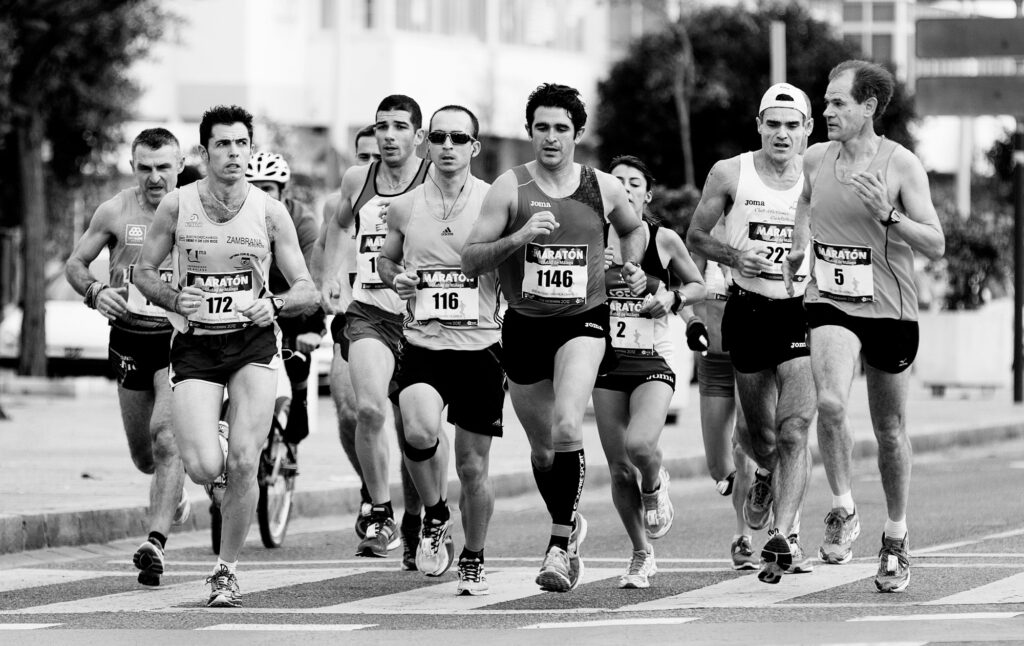Running is more than just a modern fitness trend; it’s deeply rooted in our evolutionary history. Our muscles, bones, and cardiovascular system have evolved specifically to support this high-endurance activity. Here’s why running is not only beneficial but also a natural part of who we are as humans.
Evolutionary Background: Born to Run
1. **Human Anatomy and Endurance**: Our bodies are uniquely designed for long-distance running. Unlike most animals, humans can run long distances thanks to our upright posture, long legs, and efficient cooling system (sweating). These traits helped early humans hunt and scavenge over vast terrains.
2. **Muscle Development**: The muscles in our legs, hips, and core are optimized for running. The large gluteal muscles (glutes) stabilize our hips, while the long tendons in our legs act as springs, storing and releasing energy with each stride. These adaptations make running an energy-efficient way to travel long distances.
3. **Cardiovascular Efficiency**: Running requires a well-developed cardiovascular system, and our hearts and lungs are up to the task. The ability to sustain moderate to high levels of physical exertion over extended periods likely played a role in our ancestors’ survival, allowing them to outrun prey or persist until the prey was too exhausted to continue.
•Physical Benefits: Tapping into Our Natural Potential
1. **Improved Muscular Strength and Endurance**: Running regularly taps into the full potential of our muscle groups, particularly in the lower body. This not only strengthens the muscles but also increases their endurance, enabling them to perform efficiently for longer periods.
2. **Bone Density and Health**: The repetitive impact of running stimulates bone growth and density, a trait that has been critical for our survival in the wild. By running, you maintain and even enhance this natural bone strength, reducing the risk of osteoporosis and fractures.
3. **Efficient Fat Burning**: As an evolutionary advantage, running promotes fat burning by utilizing it as a primary energy source during prolonged activity. This process helped our ancestors survive in times of food scarcity and continues to be a highly effective way to manage weight today.
•Mental and Psychological Benefits: Built-In Rewards
1. **Natural Stress Relief**: The “runner’s high,” characterized by a release of endorphins, is an evolutionary reward system that encourages continued activity. This natural high helped our ancestors stay motivated during long hunts and now serves as an excellent way to combat modern-day stress.
2. **Enhanced Focus and Cognitive Function**: Running improves brain function by increasing blood flow and oxygen supply to the brain. This evolutionary trait likely developed to help early humans stay alert and focused during endurance tasks, and it continues to benefit cognitive health today.
3. **Improved Mood and Mental Resilience**: The regular practice of running boosts mental resilience, a trait that was essential for survival in challenging environments. Today, this translates into better emotional regulation and a stronger ability to cope with life’s challenges.
Conclusion: Embrace Your Evolutionary Heritage
Running is not just a workout—it’s an activity deeply embedded in our evolutionary history. Our muscles, bones, and cardiovascular system have evolved specifically to make us excellent endurance runners. By running, you’re not only staying fit but also tapping into the very essence of what makes us human. Embrace this natural ability and experience the profound physical and mental benefits that come from moving the way our bodies were designed to move.


